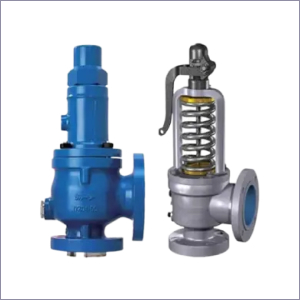Cost-effective Marine Valve Solutions: Balancing Quality and Price
From regulating fuel supply to managing water flow, valves are critical for smooth operation. However, with numerous options available in the market, finding cost-effective solutions without sacrificing quality can be a challenge. Balancing price and performance is key to ensuring long-term efficiency and reliability in marine operations. This article explores the factors to consider when looking for marine valve solutions that offer the best value for your money.
1. Understand Your Vessel’s Requirements
The first step in choosing the right marine valve is understanding the specific needs of your vessel. Different vessels, from oil tankers to cargo ships, have unique requirements based on the fluids they handle and the operating environment. For example, some vessels may need valves that can handle high pressures, while others need corrosion-resistant valves due to saltwater exposure. Knowing your ship's exact needs allows you to avoid overpaying for unnecessary features and ensures you select valves that will perform reliably in your operating conditions.
2. Choose the Right Valve Type
Marine valves come in various types, including ball valves, gate valves, globe valves, butterfly valves, and check valves. Each type serves a different purpose, and selecting the right one can save both money and resources in the long run. For example, ball valves offer quick shutoff and are often used in systems requiring immediate control, while gate valves are ideal for applications that require full, unobstructed flow. By choosing the right valve for the specific application, you avoid inefficiencies that could lead to higher operational costs or system failures.
3. Material Matters: Choose Durable Materials
The material used to manufacture marine valves is another crucial factor that influences both cost and durability. Common materials include stainless steel, bronze, and brass. Stainless steel is highly resistant to corrosion, making it ideal for marine environments, but it can be more expensive. Bronze is another popular option for its durability, but it may not be suitable for all applications. Investing in valves made from materials that can withstand the harsh marine environment can reduce long-term replacement and maintenance costs, making it a cost-effective choice despite the initial investment.
4. Opt for Reliable Brands
In the marine industry, sticking with reputable brands is often a smart decision. While generic or less-known brands may offer lower upfront costs, established manufacturers tend to have higher quality standards, ensuring that their valves meet industry certifications and last longer. Additionally, well-known brands typically offer better customer service, warranties, and technical support, which can save you time and money in the long run if issues arise. Researching and choosing trusted manufacturers helps strike the perfect balance between quality and price.
5. Consider Long-term Maintenance Costs
When evaluating the cost of marine valves, it’s essential to look beyond the initial price tag and consider the long-term maintenance costs. Some valves may require frequent maintenance, while others are designed for longer operational lifespans with minimal servicing. Opting for valves that are easy to maintain and repair can significantly reduce downtime and associated costs. For example, valves with easily replaceable seals or self-lubricating components can help reduce maintenance efforts and costs, making them a more cost-effective solution in the long term.
6. Invest in Proper Installation
Proper installation is often overlooked but plays a huge role in ensuring the long-term performance of marine valves. Even the highest-quality valve can fail prematurely if not installed correctly. Hiring experienced technicians or following the manufacturer’s installation guidelines can save you money by preventing leaks, operational inefficiencies, and costly repairs. Additionally, poorly installed valves may void warranties, leading to more expenses down the road. Ensuring proper installation upfront minimizes risks and maximizes the longevity of your valves.
7. Look for Energy-efficient Solutions
Energy efficiency is an often overlooked aspect when selecting marine valves. Valves that operate smoothly and reduce pressure loss can lead to significant energy savings over time. For example, ball valves with low friction design can reduce the energy needed to pump fluids through the system, translating into lower fuel or electricity costs. By choosing energy-efficient valves, you can improve the overall efficiency of your vessel’s operations, which contributes to both cost savings and environmental sustainability.
8. Bulk Purchasing and Supplier Relationships
Another way to reduce the cost of marine valves is by purchasing in bulk and developing long-term relationships with reliable suppliers. Bulk purchasing can often lead to discounts, and maintaining a steady relationship with suppliers can result in better service, faster delivery times, and even custom solutions that meet your specific needs. Working with suppliers who understand your requirements can also reduce the risk of receiving substandard products, helping you get more value for your money.
9. Regular Valve Testing and Inspection
Preventative maintenance is key to ensuring the cost-effectiveness of marine valves. Regular testing and inspection can help detect potential issues before they escalate into costly failures. Ensuring your valves are functioning properly not only reduces the likelihood of emergency repairs but also extends the lifespan of the valves. By identifying small issues early, such as wear and tear on seals or minor corrosion, you can address them with minor fixes rather than expensive replacements. This proactive approach helps manage costs over time.
10. Stay Updated on Industry Trends
Lastly, staying updated on industry trends and new technologies can lead to cost-effective solutions. Advancements in materials, design, and smart valve technology can offer more durable, efficient, and environmentally friendly options. Keeping an eye on emerging products can help you invest in cutting-edge solutions that offer both immediate and long-term savings. Many modern valves now include features such as remote monitoring, which allows for better control and real-time diagnostics, further reducing operational costs and improving efficiency.
Conclusion
Cost-effective marine valve solutions aren’t just about finding the cheapest option—they’re about finding the best fit for your specific needs, ensuring longevity, reliability, and overall cost savings.




Comments
Post a Comment